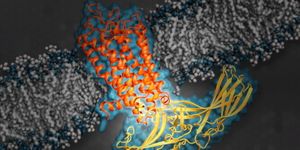Imagine Your Head, In a Particle Accelerator

Now that the serious talk is done, has anyone wondered what would happen if a part of your body, say the head, struck by a particle beam made of trillions of protons?
On 13 July 1978, when checking a malfunctioned part of the largest particle accelerator in Soviet Russia back then, physicist Anatoli Petrovich Bugorski leaned into the beam path without knowing the safety mechanisms had failed. A burst of high-energy protons was initiated and traveled through the back of his head and exited near his nose, making Bugorski the only person known to have been hit by a particle accelerator beam. Feeling no pain at the moment, he later recalled experiencing a flash of light “brighter than a thousand suns”.
Exposing human to proton beam is nothing new. Proton therapy—a cancer treatment that uses proton beams to destroy tumors—was invented before Bugorski’s accident. Compare to other external radiation therapy proton beam can deliver a big dose (maximum 250 MeV or million electron volts) of radiation that conforms to a specific pattern and causes the “exit” dose, efficiently reducing damage to healthy tissues and avoiding unwanted side effects. But in the accident, the proton beam that struck Bugorski was estimated to be 76 billion electron volts, over 300 times higher a proton therapy beam.
Protons, like other Ionizing radiation particles (e.g., alpha, beta, and gamma) can cause damages in biological bodies by breaking chemical bonds in DNA and triggering apoptosis, necrosis and mutation.
Immediately after the accident, Bugorski was taken to a clinic in Moscow with a swollen face. Luckily for the young Russian, the beam was narrow and just went through the head, sparing tissues that are particularly sensitive to radiation, such as bone marrow and the gastrointestinal tracts (where high dose radiation would most certainly cause cancer).
Today Bugorski is still alive today: with one side of his face paralyzed, deaf in one ear, albeit cancer-free. He has also suffered from seizures—a result of brain tissue-scarring left by the proton beam.
After the accident, with no impairment in his intelligence, Bugorski went on to finish his Ph.D. degree in physics and worked as a coordinator of physics experiments. Nonetheless, the only thing that the world remembers him by is his freakish experience inside the particle accelerator.
Suzie Sheehy on the man who put his head in a particle accelerator and survived. Credit: Institute of Physics
Source: Quantz Media/Discover Magazine








